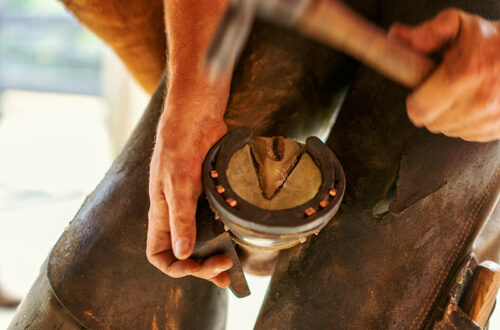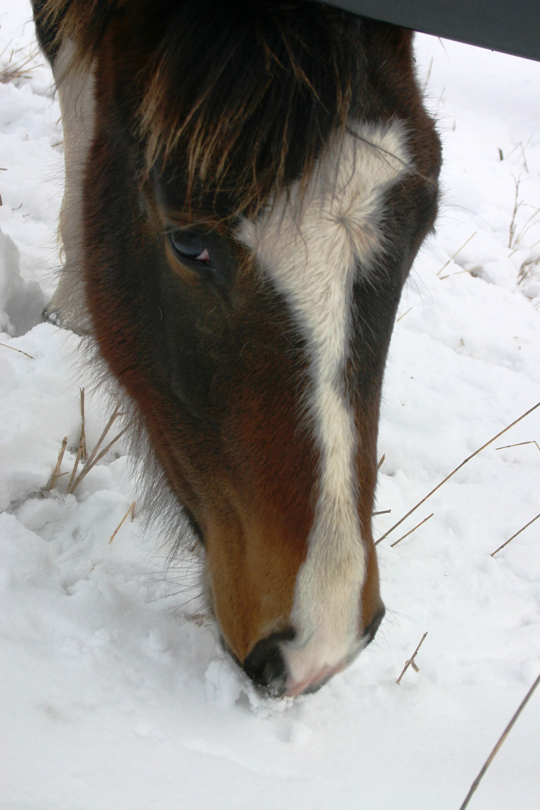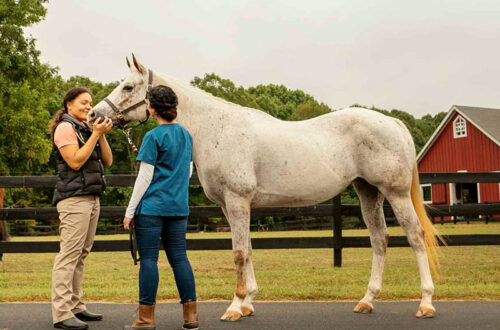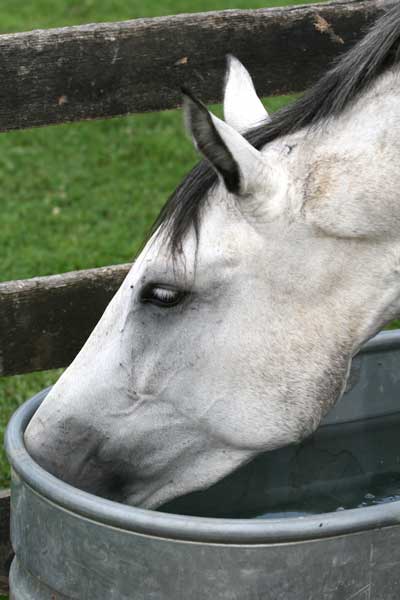
The Importance of Hydration
By Christina Reynolds, PAS, for Triple Crown Nutrition, the Official Feed Sponsor of USPC
Knowing your horse’s hydration status is important regardless of time of year, but especially if you are headed to any special events or he is away from home.
Dehydration is a condition where the body loses too much water and other fluids that it needs to work normally. The difference between moderately dehydrated but fit continue and dehydration that requires intravenous (IV) fluid replacement is just two to three gallons of unreplaced fluids. You can check your horse’s hydration with a few quick skills.
Check the Gums: They should be pink, moist, and slippery. Gums that feel tacky and look pale indicate the beginnings of dehydration. To measure capillary refill time, press your finger into the gum until it blanches (turns white), and count the seconds until the color returns. Delays beyond 4 seconds indicate dehydration.
Skin Tent Test: Pinch the skin on the horse’s neck and see how long it “tents.” Skin that remains tented for over 2 seconds indicates dehydration.
Hydrating During Trailering
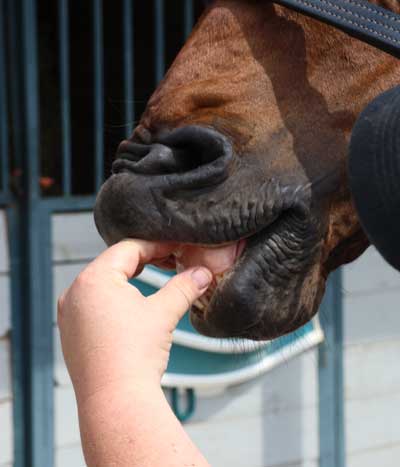
At 2% dehydration, which your horse is likely at before even starting exercise in the summer or after trailering, the body starts to conserve fluids. This starts with saliva production. You can see this when checking the gums; they will feel “tacky.” Decreased saliva production can increase the chance of esophageal obstruction (choke), especially for horses eating dry hay. Feed a wet mash, soaked forage, or regular grass to help reduce choke risk.
For every hour of trailer transport under ideal ambient conditions, in a good railer with a considerate driver, a horse will become 1% dehydrated. Horses arrive at their show or trail ride already behind the eight ball in terms of hydration. For long-distance travel, eight hours in the trailer will easily have them at the 5% dehydration level, and they will be feeling the effects of dehydration. They are unlikely to replace their fluid levels by themselves overnight and are likely to begin the competition with a level of dehydration that will negatively affect their performance.
Giving the horse time to recover after transport is a good way to increase their ability to perform. In humans, 3% dehydration means a 10% decrease in muscle strength (think driving a horse uphill or jumping in a competition) and an 8% decrease in muscle speed (think about the ability to recover after a stumble or make a quick turn in the ring). We don’t have research data in horses, but we can assume it will be similar.
Effects of Exercise
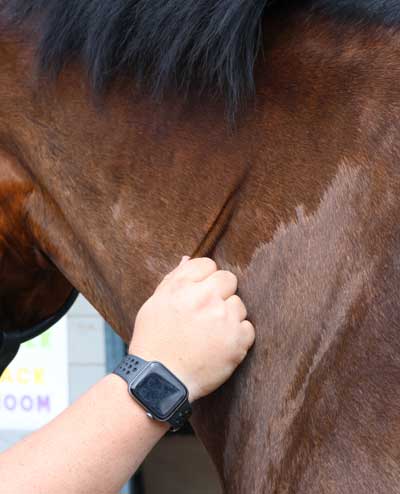
The first bodily fluid to be affected by fluid loss during exercise is plasma, the watery portion of the blood. In extreme conditions, horses can lose four gallons of fluid per hour in sweat. As the watery portion decreases, the blood becomes thicker and harder to move around the body, which is where you often see a “hanging heart rate” that doesn’t want to drop below 60 beats per minute (bpm) or so. This is a useful indicator that the horse is being adversely affected by the level of dehydration.
A fit horse will likely come in from moderate exercise around 75 bpm and fairly quickly drop below 60 bpm and then to his resting heart rate. An unfit horse will be slow to drop below that 60 bpm mark but will progress down gradually, and a dehydrated horse will drop a little, then remain the same for a while. For reference, a normal resting heart rate in adult horses is around 30 to 40 bpm, and some horses can approach 150+ bpm during moderate exercise.
After decreasing saliva production to conserve fluids, the next thing a horse will do is decrease sweating. They will do this even while still exercising, which can be a problem as sweating is a major way the body can decrease internal heat and avoid hyperthermia, when a horse’s core temperature is above 105.8-107.6 degrees Fahrenheit (normal is 99-101 degrees F).
To dissipate heat, clipping horses, keeping heavy manes braided and off their necks, and sponging them down regularly with water can help minimize the effects of the decreased sweating.
Unfortunately for us, horses’ thirst mechanism is not well designed for what we ask them to do. In humans, sweat composition is saltier than our blood, so we have a cue to drink (thirst) relatively early in the dehydration process compared to horses, whose sweat is less salty than their blood. It takes a while for the blood-sodium level to increase enough to trip their thirst cue. Horses also rely more on their blood pressure dropping due to dehydration to signal thirst than the blood-sodium level alert that humans use. This is a slower process than the sodium trigger, and often means horses aren’t interested in drinking until they are much more dehydrated.
Helping Hydrate Horses
Establish good horse hydration before an event. Ensure clean water is available 24/7. Research at Penn Vet’s New Bolton Center showed horses prefer water around 45 F regardless of outside temperature but will drink more water at 65 F if there is no cold-water option. Offering water with a couple handfuls of rice bran and/or senior feed in the bottom of the water bucket may entice horses to drink more. Offer before travel and at rest stops. Also, increasing the amount of sodium in the horse’s diets for days prior to an event with a couple tablespoons of baking soda split between meals can spur drinking. Baking soda provides sodium, which kicks on the thirst drive, whereas salt provides both sodium and chloride (a signal to pee out extra fluid). You can also use a commercially available electrolyte blend to replenish lost electrolytes from sweating.
Know Your Horse’s Normal Heart RateTo get proficient at checking your horse’s heart rate and using it to understand cardiovascular fitness and dehydration effects, you can use either your hand or an inexpensive stethoscope. Place the stethoscope or your hand behind the left point of elbow near the girth and listen for the “lub-dub,” and count each paired “lub-dub” as one heartbeat. You can use your watch or the timer on your phone to time one minute while you count. Find your horse’s resting heart rate first and check it a couple times over several weeks to establish what “normal” is for your individual horse. This is helpful for your vet, too, for if you call with an emergency.Temperature, heart rate, and respiratory rate give the vet a ton of information as they decide how much of an emergency they may have. Once you know the horse’s resting heart rate, check it after your rides. You can check it every five to 10 minutes post-ride to evaluate your horse’s ability to recover. |
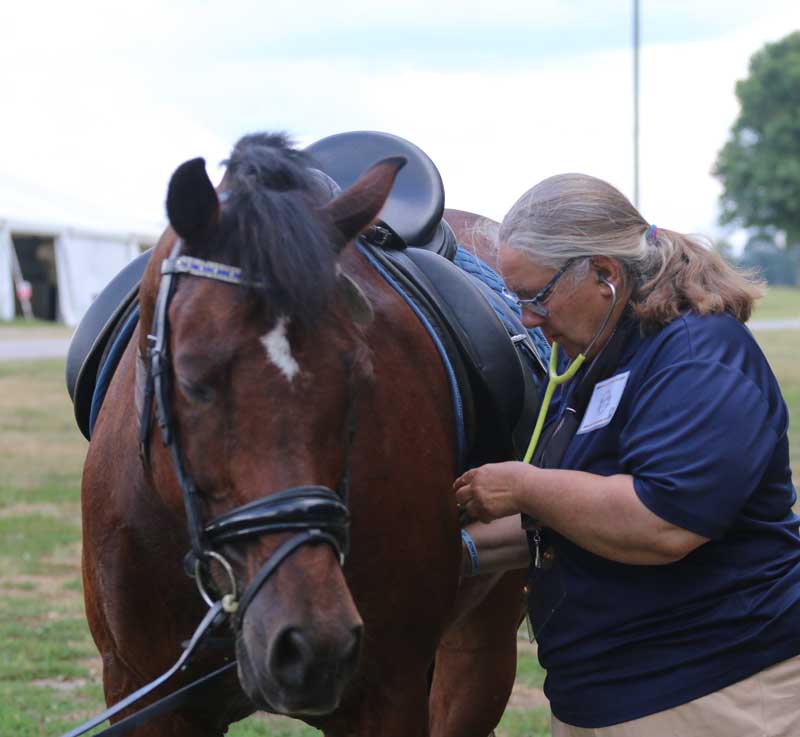

About Triple Crown Nutrition — Official USPC Feed Sponsor
Triple Crown offers premium equine feeds that provide the exact nutrition your horse needs, designed to help support immunity and gut health. Learn more at TripleCrownFeed.com.
This article about horse hydration was originally published in the Fall 2024 issue of Discover USPC magazine. Read more content from that issue.



